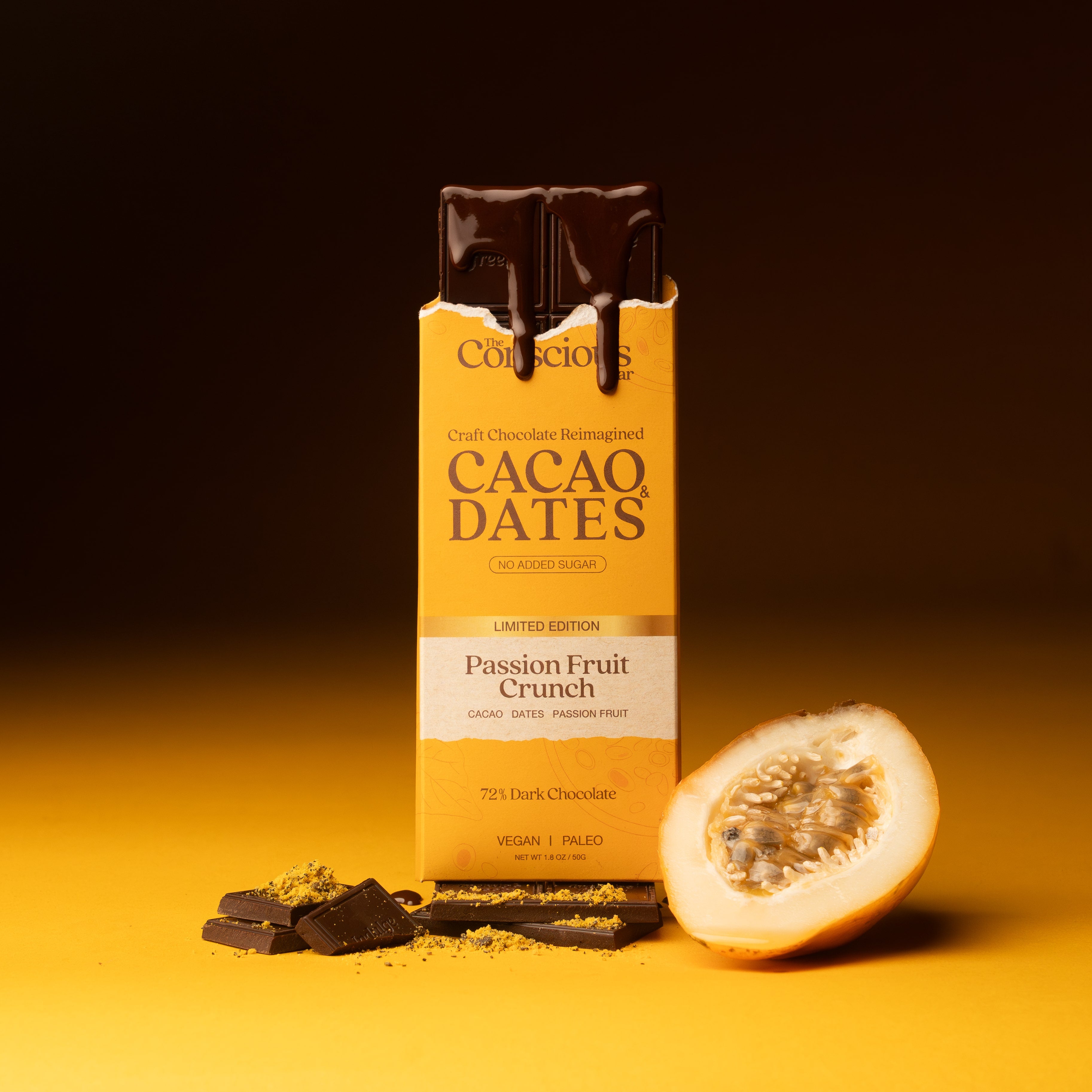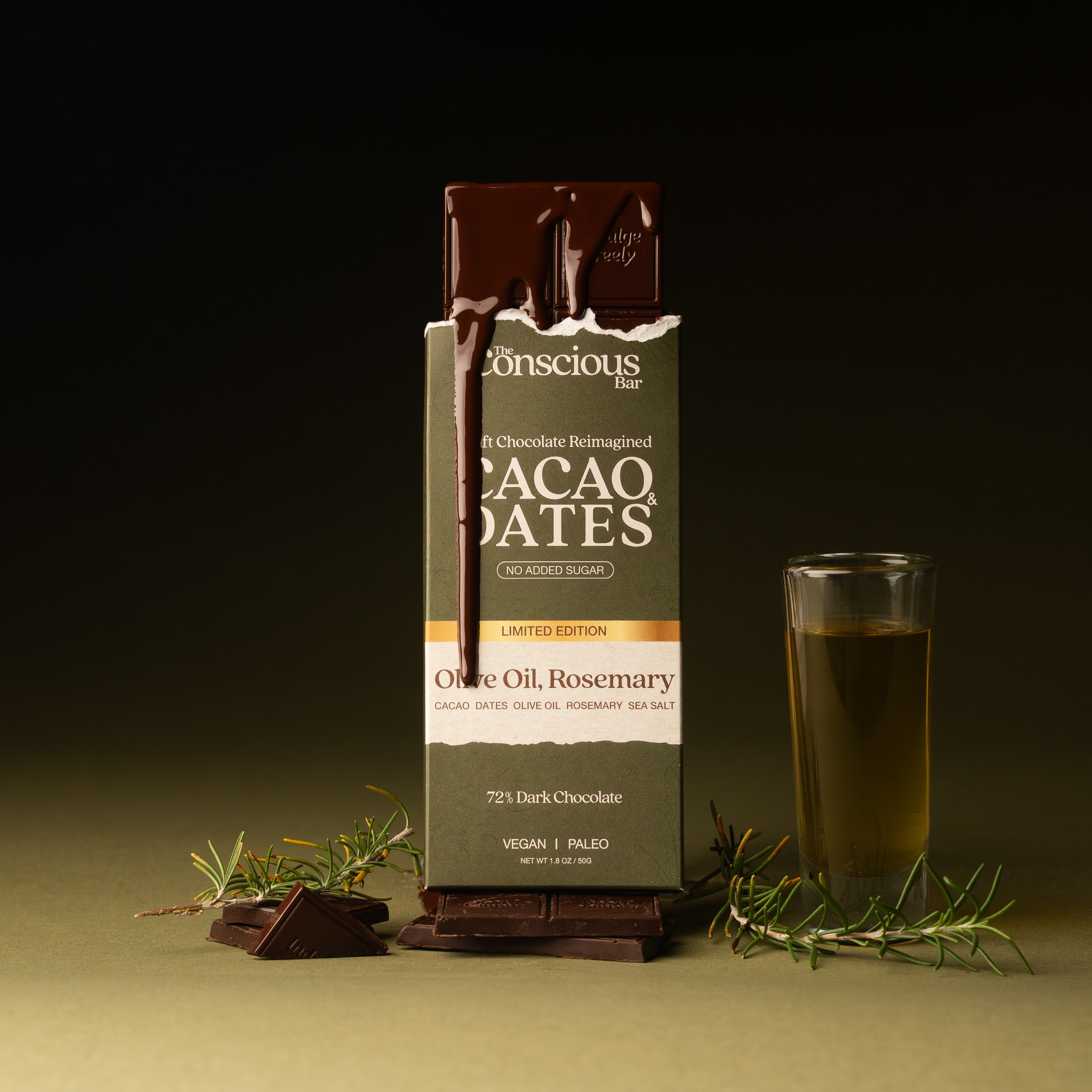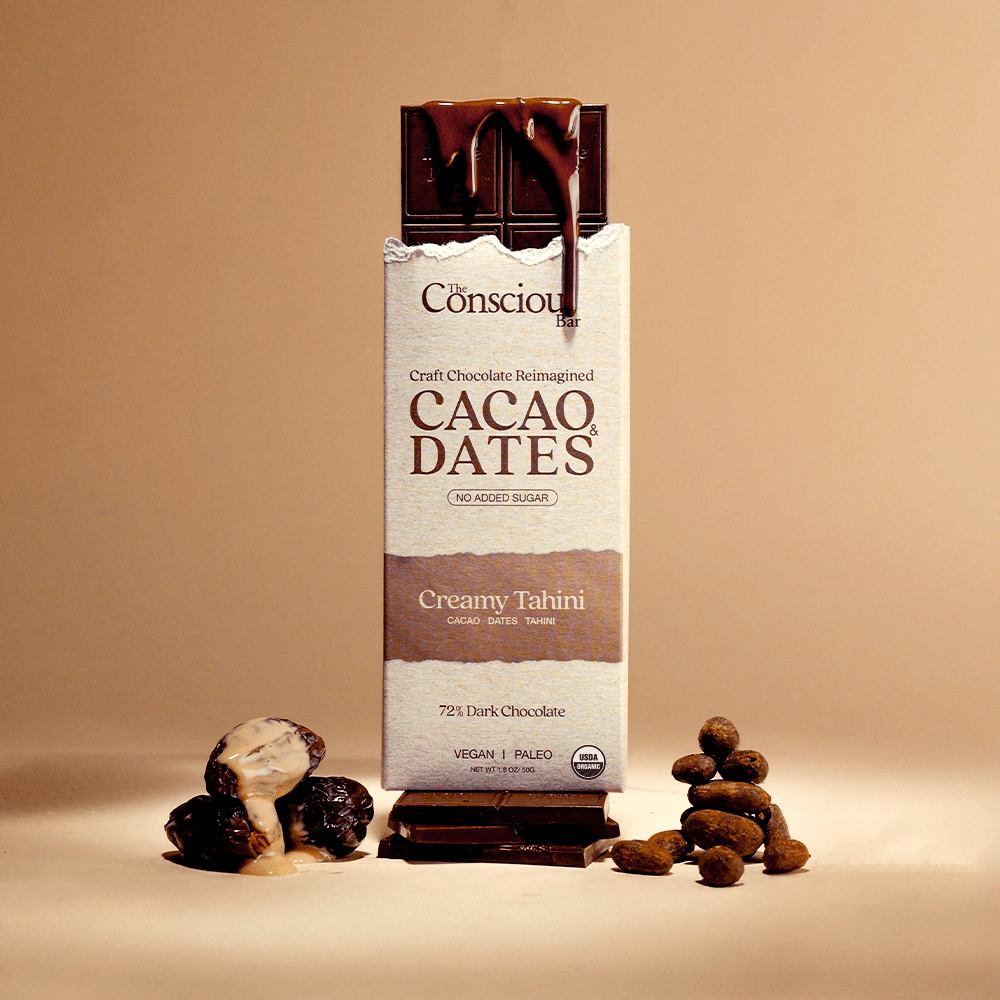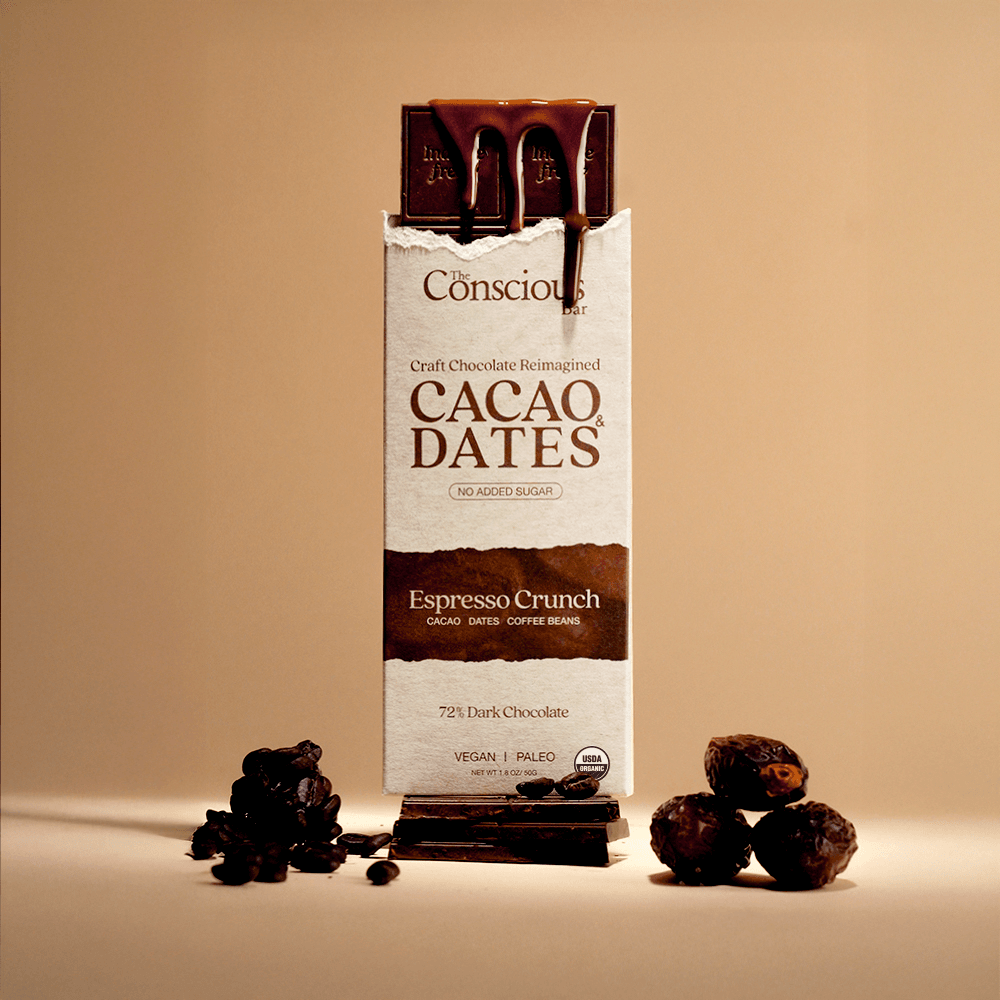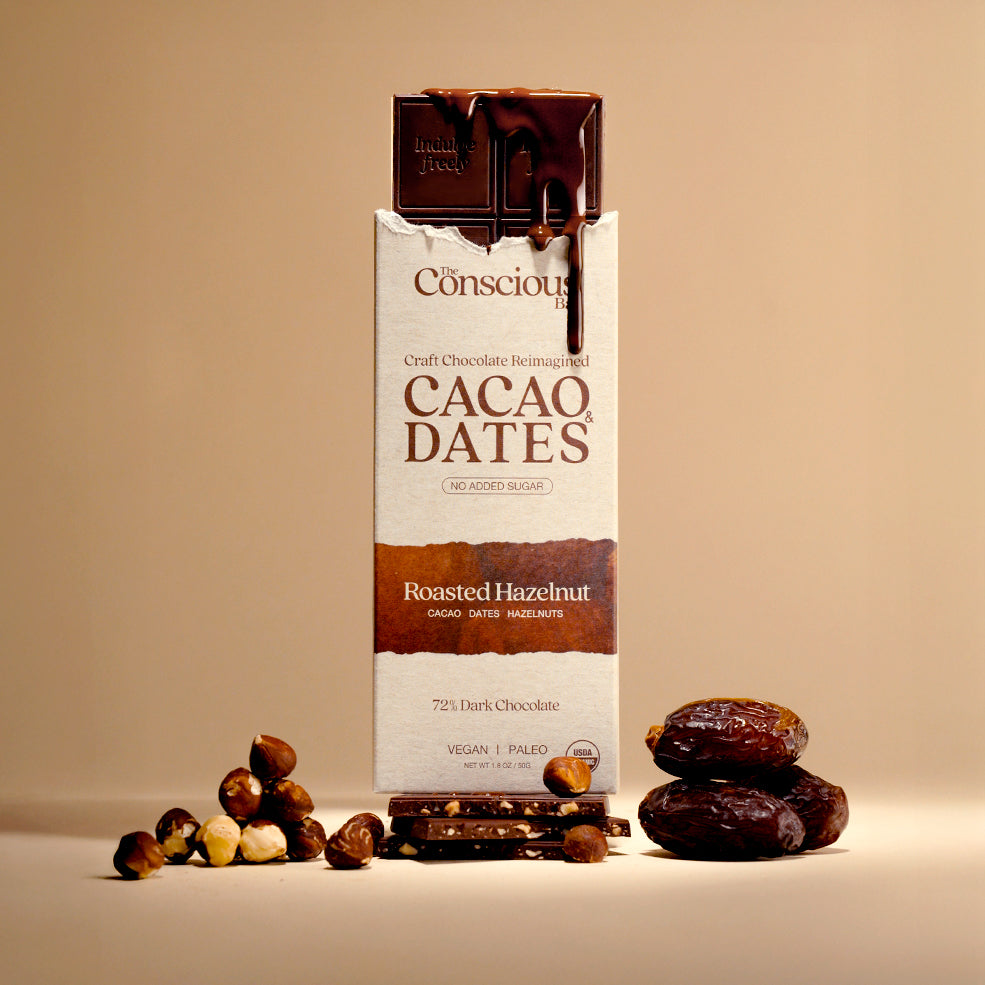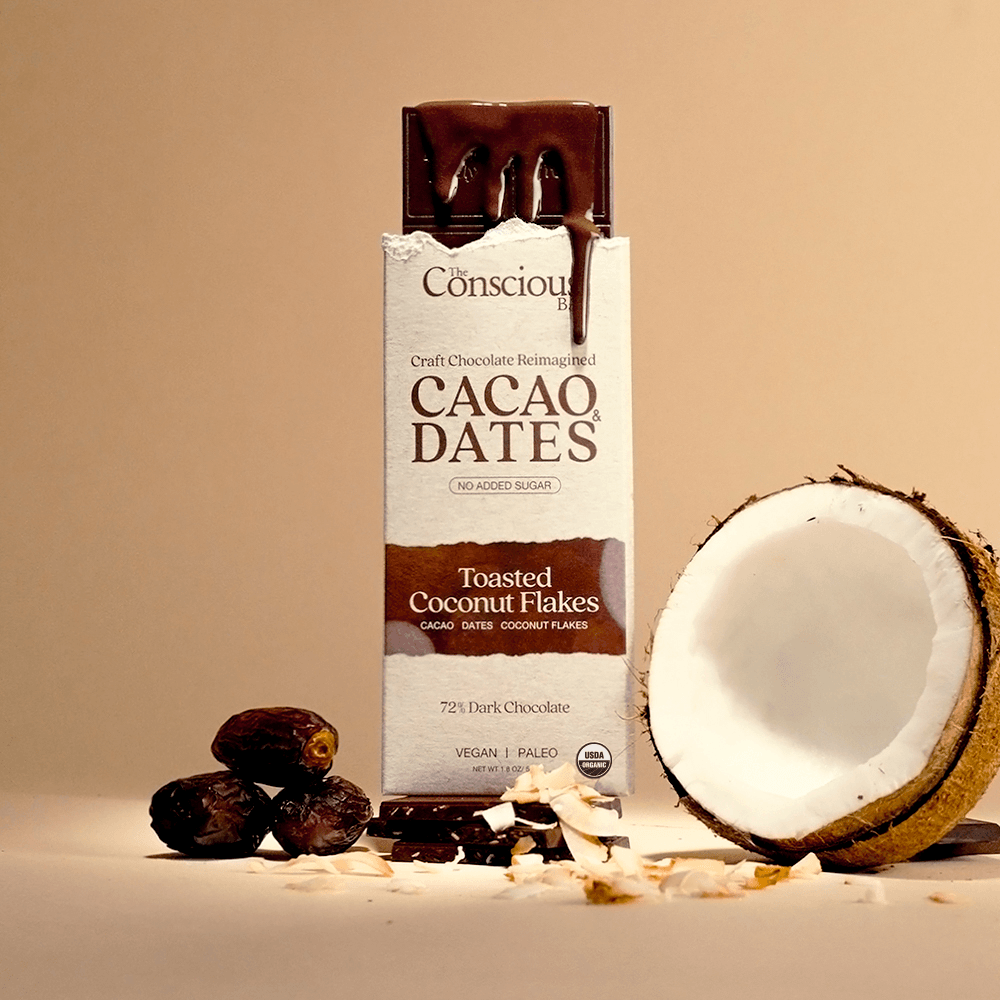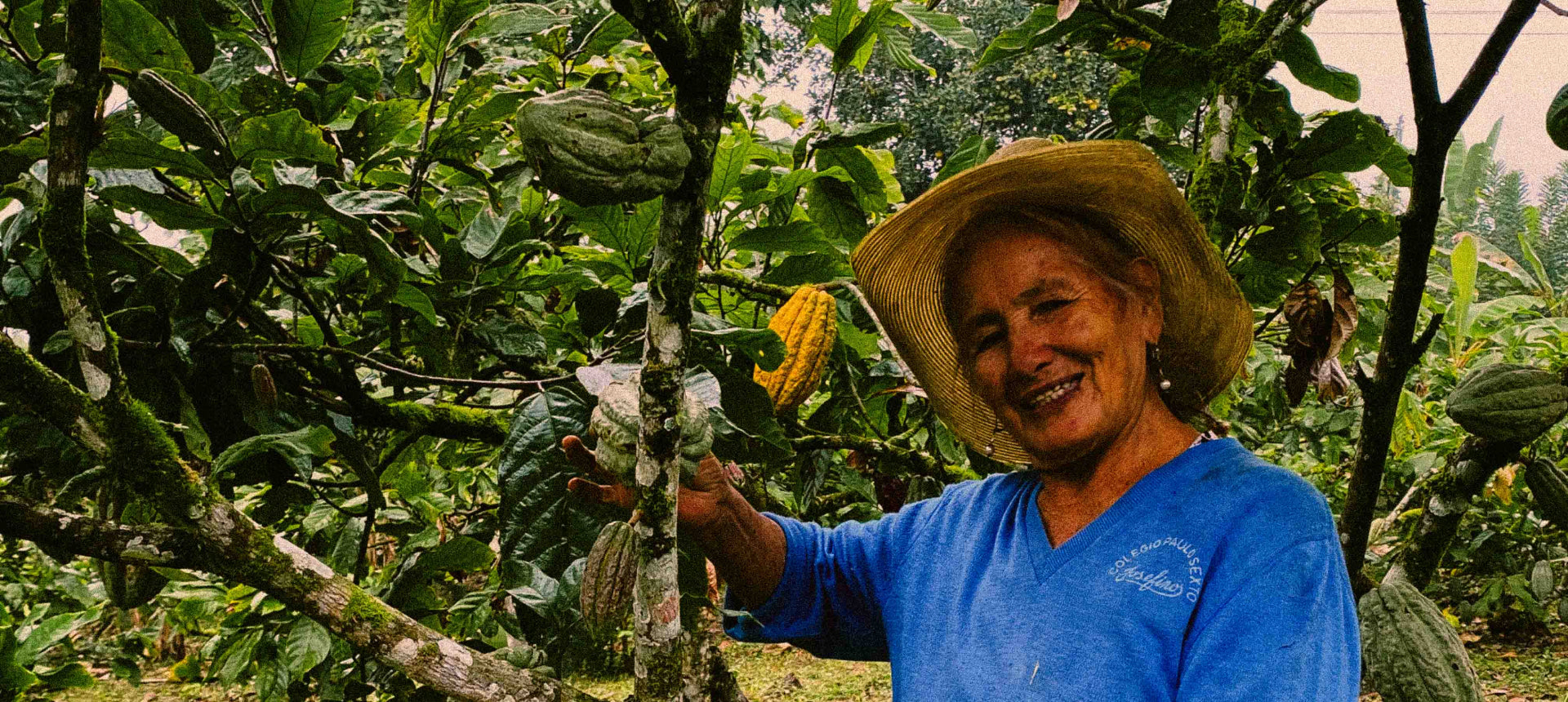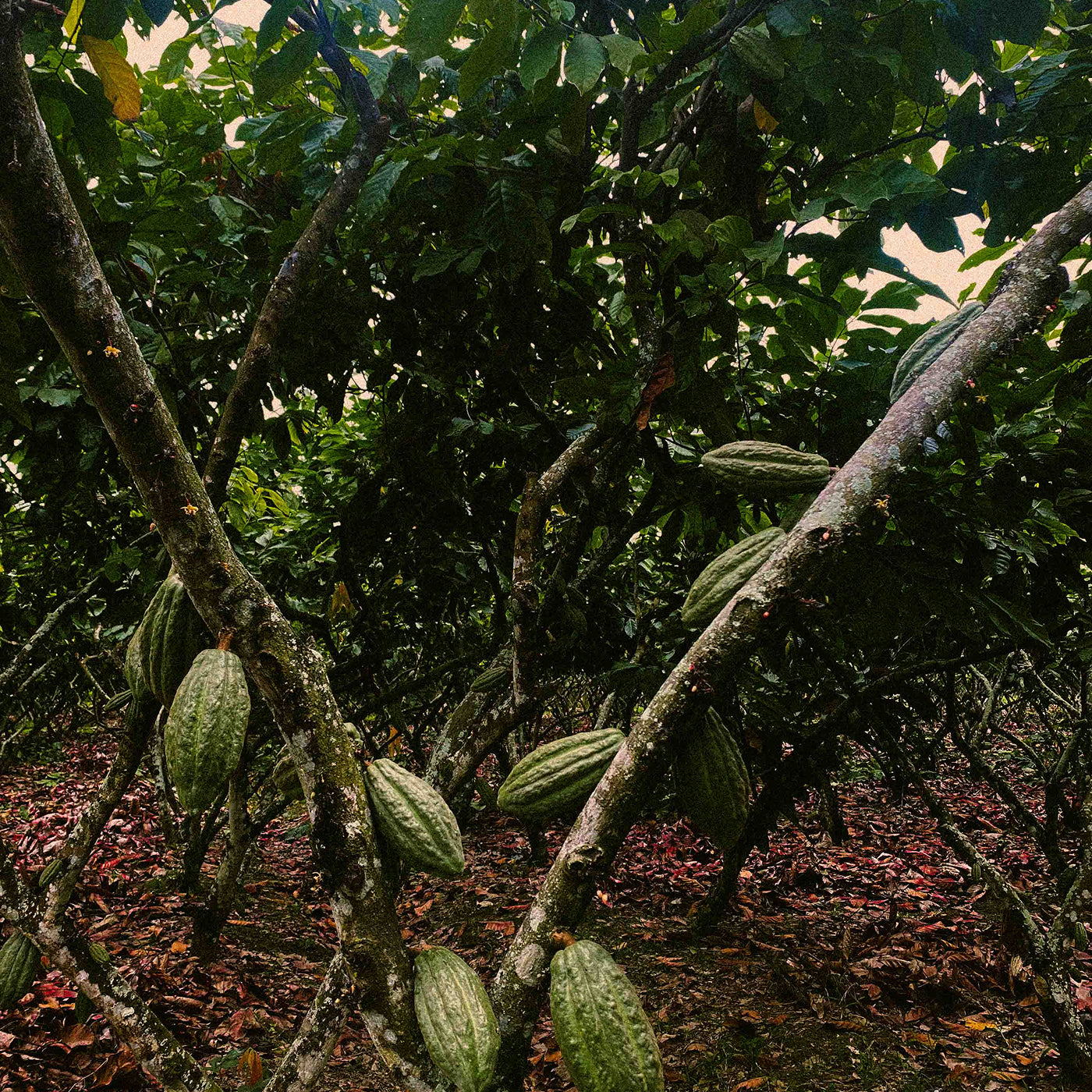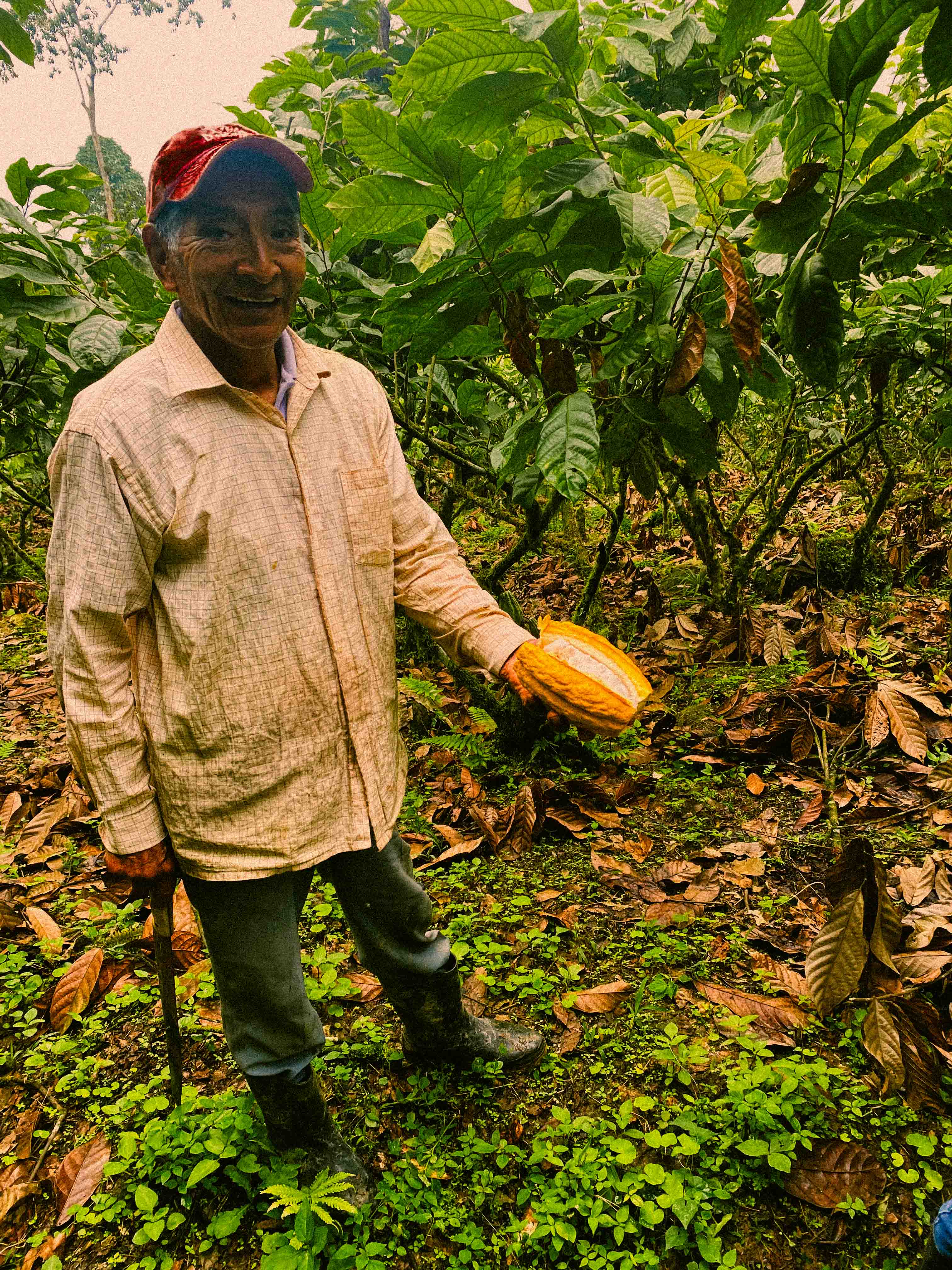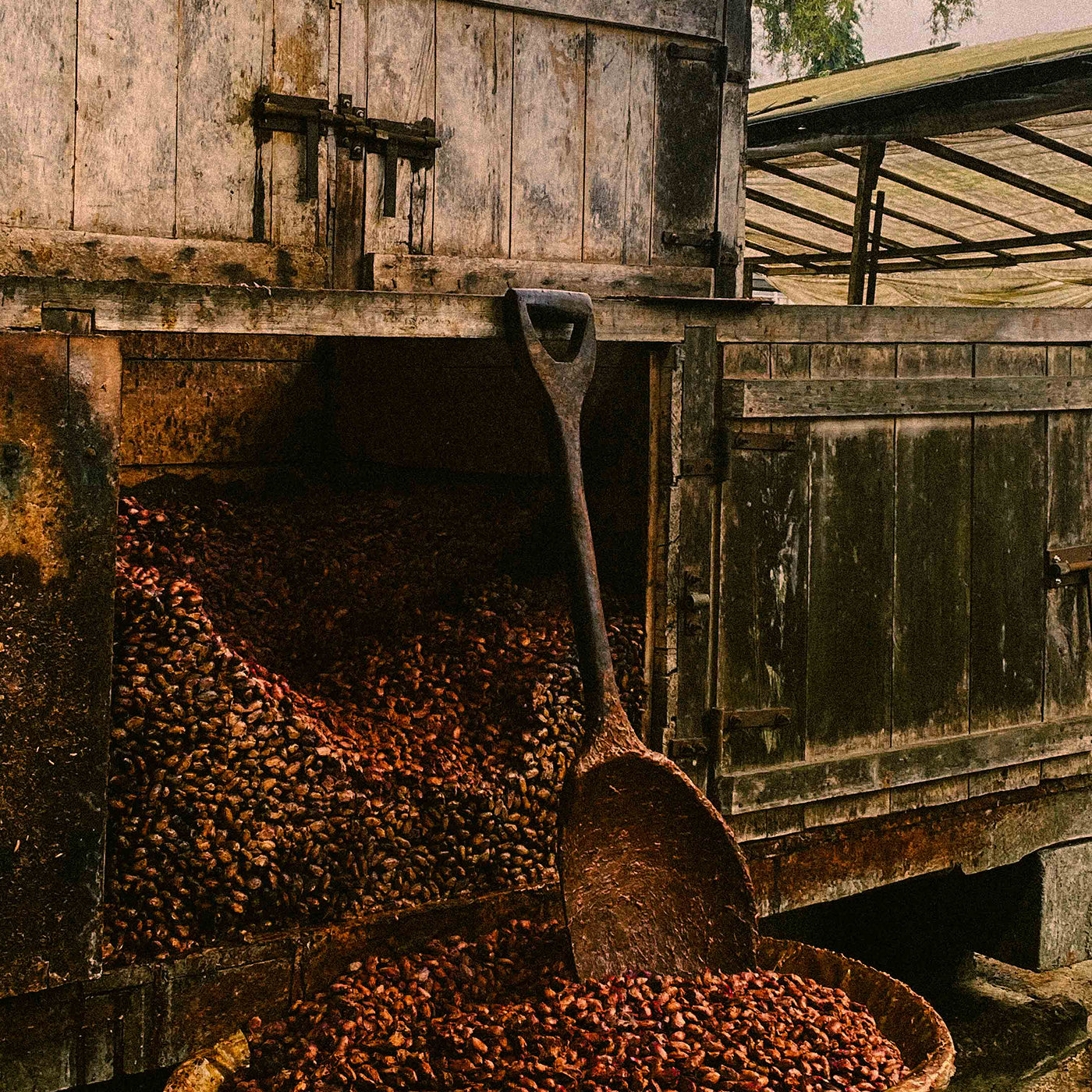THE HEART OF OUR CACAO
South Central Ecuador
Our Ecuadorian cacao is sourced via Uncommon Cacao, in collaboration with CECAO (Compañía Exportadora de Cacao de Aroma y Orgánico), a producer group working with over 1,800 smallholder farmers in south-central Ecuador. This origin is known for its strong ecological diversity and fine flavor cacao traditions.
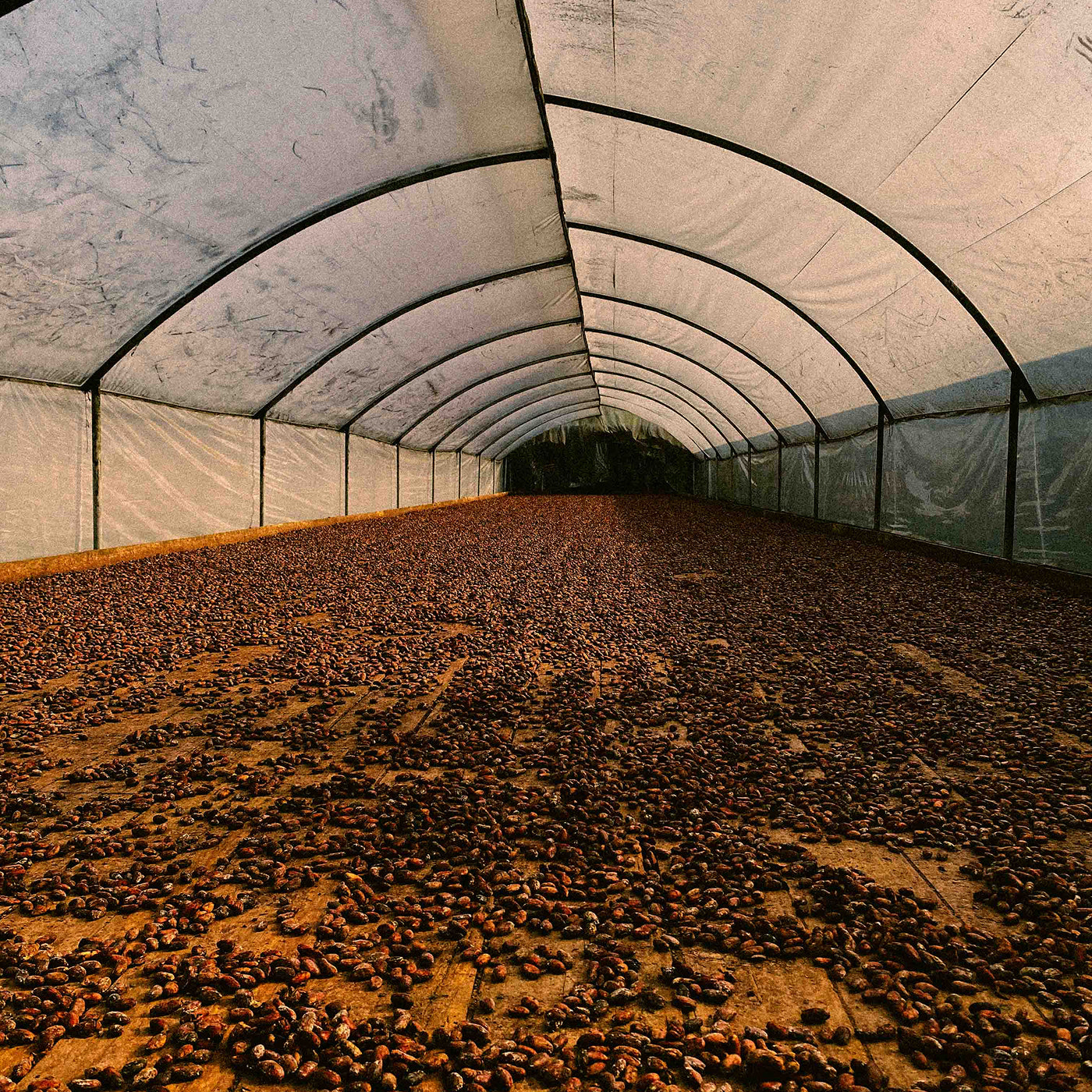
Intensified Cultivation
Embracing modern techniques with intercropping, Ecuador’s cacao is cultivated bittersweet chocolate with notes of honeysuckle, peanut, and soft florals for creamy texture with a long, clean finish.
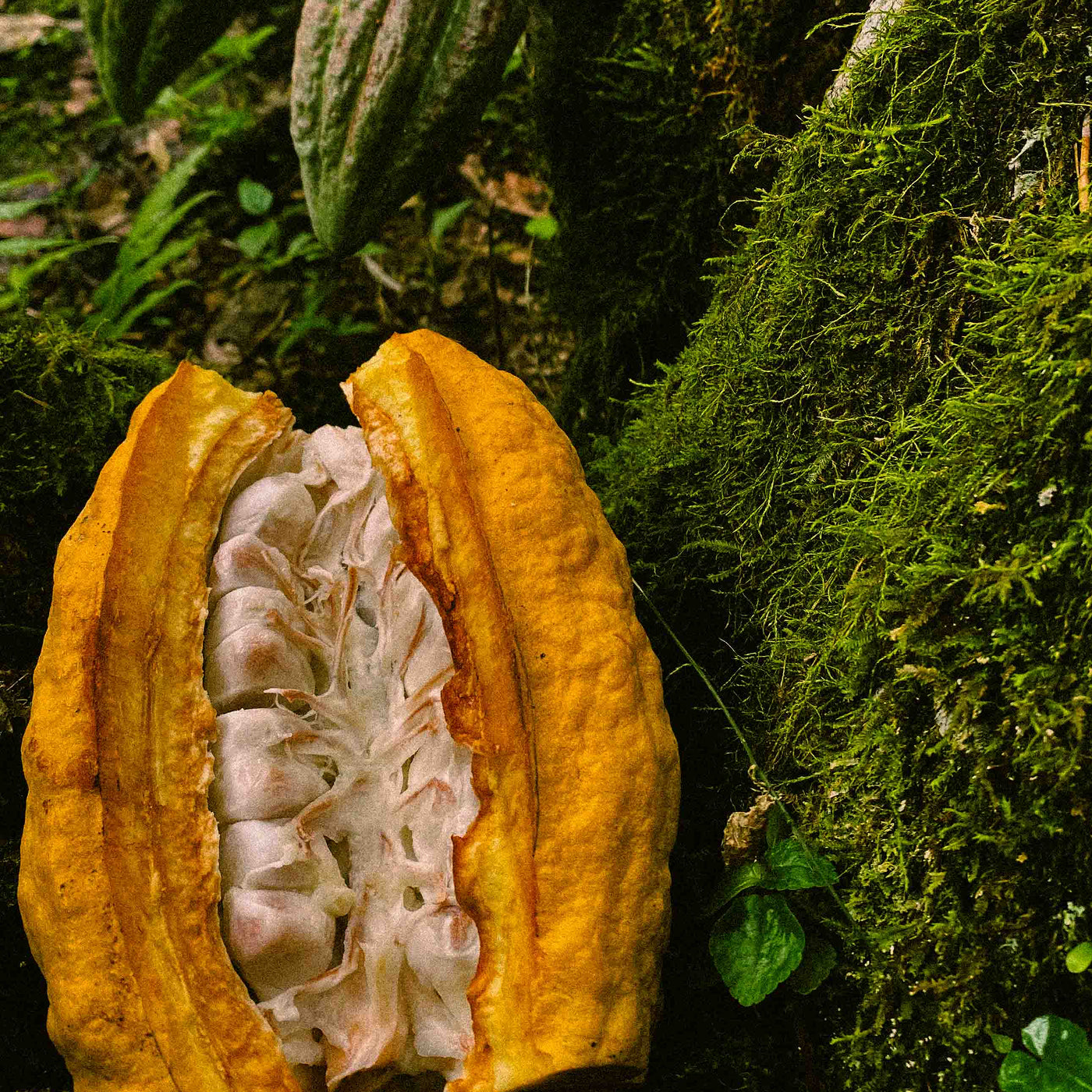
Integrated Quality Control
Each association follows strict post-harvest protocols at their fermentation and drying facilities, while CECAO conducts rigorous physical and sensory evaluations at their warehouse.

Exclusive Partnerships
CECAO pre-finances 100% of the associations, providing working capital so that producers can sell exclusively to CECAO—ensuring fair prices and consistent quality.
Post‑Harvest Processing
1. Fermentation
Cacao undergoes 5–6 days of fermentation in cascading wooden boxes to develop complex flavor precursors.
2. Drying
Beans are dried on solar-covered platforms to lock in quality while reducing moisture safely.
3. Sorting
Centralized sorting and grading ensure consistent quality across all harvested lots.
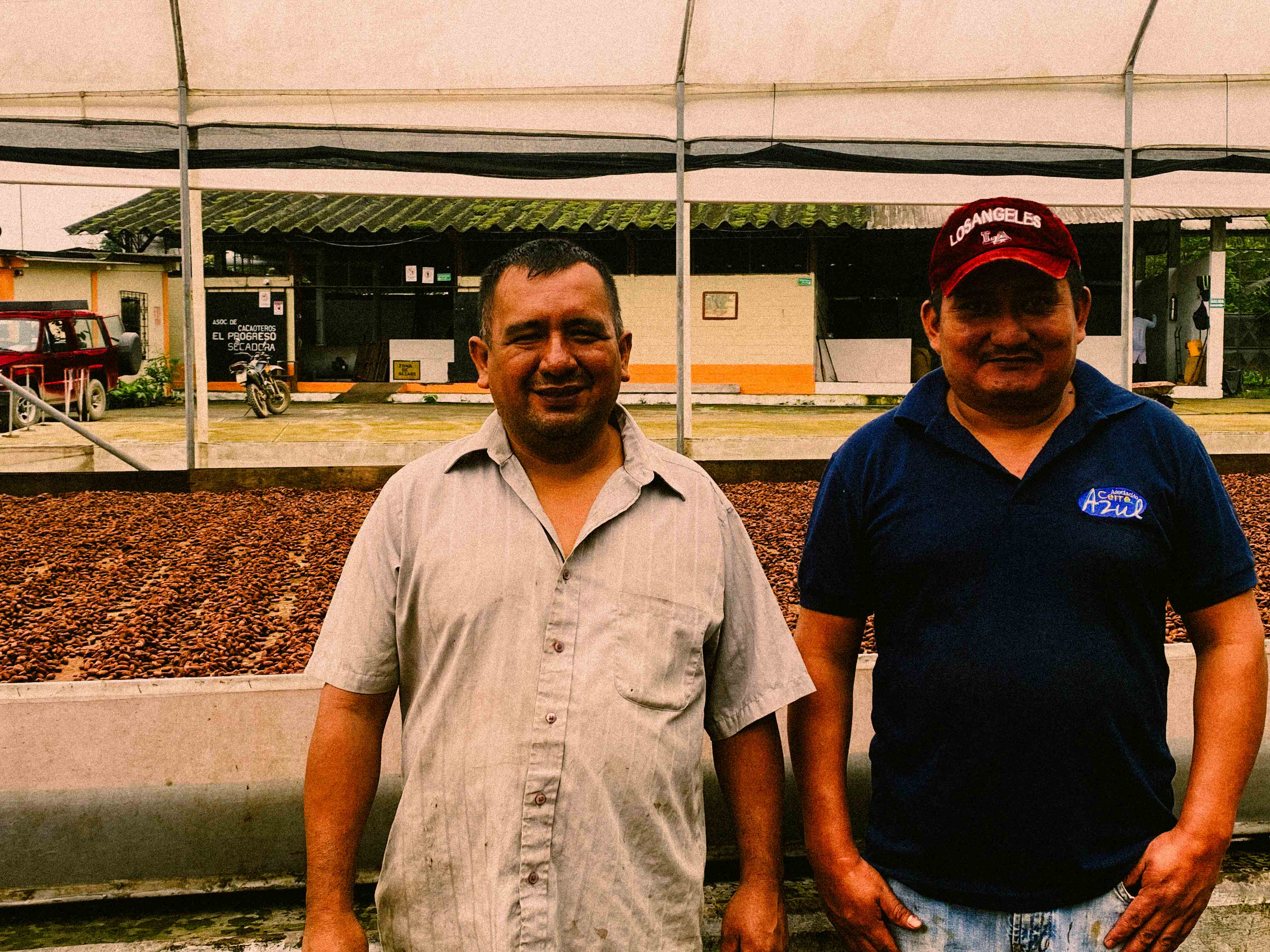
Farmer Benefits
Initiatives such as a social fund (up to $400 per year for medical expenses), organic fertilizer sales at $3/gallon, and specialized nurseries for premium cacao varieties demonstrate a holistic approach to sustainable agriculture.
The Farmers
Stewards of Tradition and Sustainability
Behind every cacao bean are dedicated farmers who infuse their heritage and hard work into their craft. Our commitment to them goes beyond transactions—it's about building lasting relationships and supporting their livelihoods.
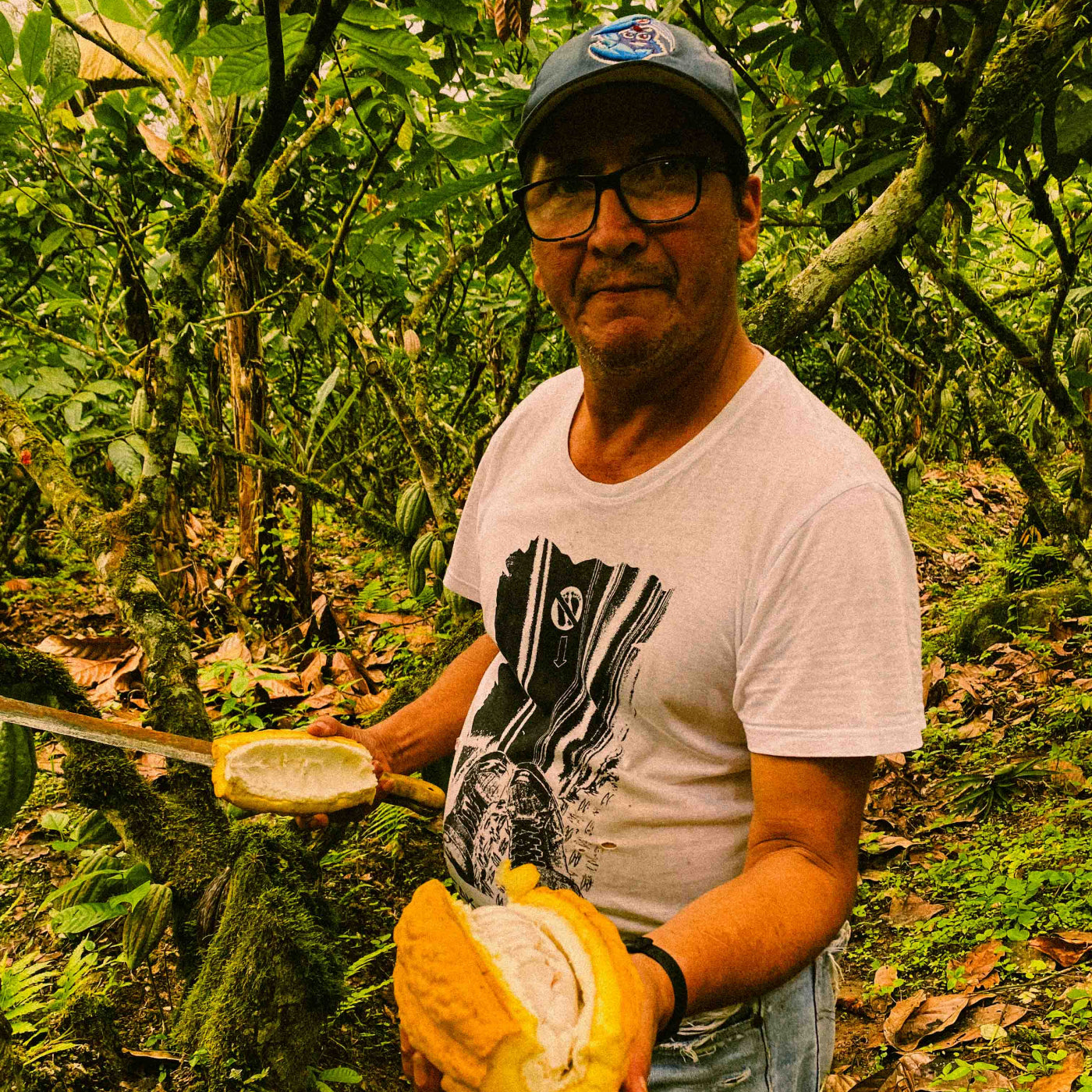
Associations evaluate cacao quality immediately at purchase, placing beans in fermentation boxes on the same day.
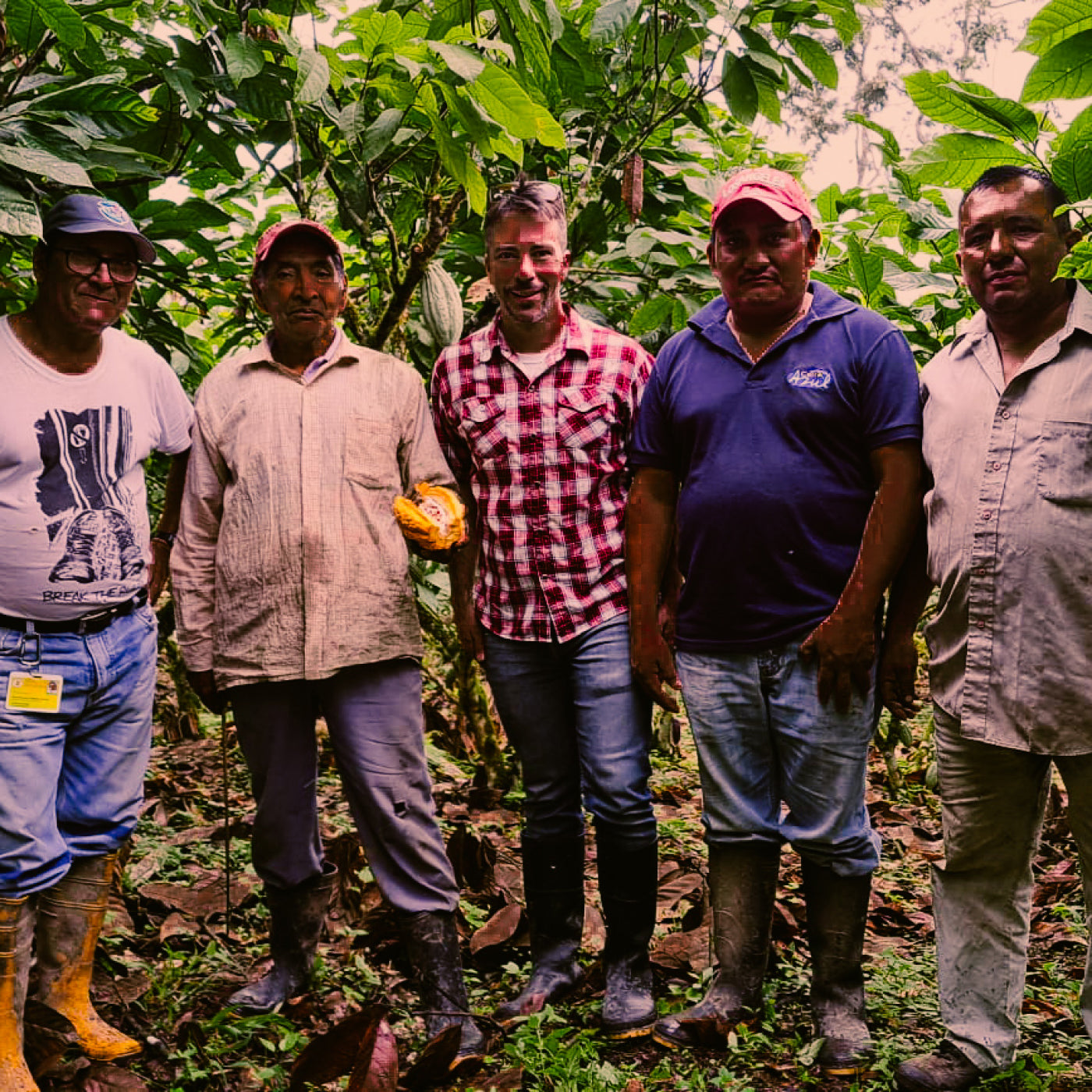
Farmers employ compost-based soil regeneration, organic methods, and zero synthetic inputs to maintain soil health and environmental balance
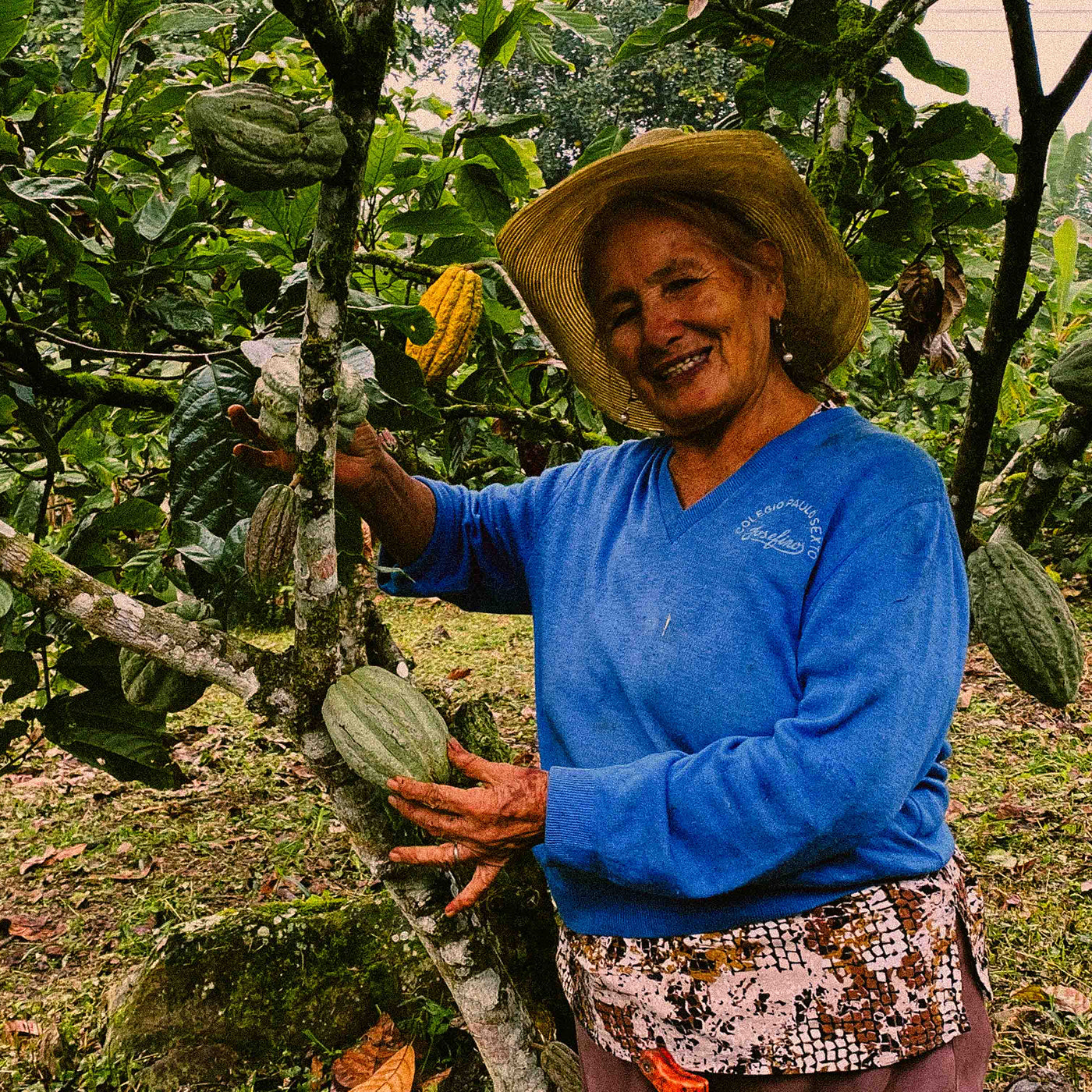
In Ecuador, women play a crucial role in the cacao sector, contributing significantly to both the cultivation and processing of cacao. At CECAO (Compañía Exportadora de Cacao de Aroma y Orgánico), nearly 20% of the 1,496 registered producers are women.
Associations evaluate cacao quality immediately at purchase, placing beans in fermentation boxes on the same day.
Farmers employ compost-based soil regeneration, organic methods, and zero synthetic inputs to maintain soil health and environmental balance
In Ecuador, women play a crucial role in the cacao sector, contributing significantly to both the cultivation and processing of cacao. At CECAO (Compañía Exportadora de Cacao de Aroma y Orgánico), nearly 20% of the 1,496 registered producers are women.



- Provinces: Manabí and Los Ríos
- Elevation: 100–300 meters
- Farming Environment: Cacao grown alongside bananas, oranges, hardwoods, and coffee in intercropped agroforestry systems
- Farm Size: 1–3 hectares
- Varieties: Nacional and Nacional-hybrid types
- Practices: Compost-based soil regeneration, organic farming, and zero synthetic inputs
- Fermentation: 5–6 days in cascading wooden box systems
- Drying: On solar-covered drying platforms
- Sorting: Conducted centrally for consistency and traceability
- Organic (USDA + EU)
- Fair for Life
- Fully traceable via Uncommon Cacao’s sourcing systems
- Bittersweet chocolate with notes of honeysuckle, peanut, and soft florals
- Creamy texture with a long, clean finish
- Farmer premiums invested in schools, infrastructure, and regenerative farming education
- Technical support for harvest quality and sustainability
- Focus on inclusivity in cooperative leadership
Frequently Asked Questions
What makes direct trade different from fair trade?
Direct trade goes beyond fair trade standards by building direct, long-term relationships with farmers. We bypass traditional commodity markets, paying farmers directly and ensuring they receive fair compensation that truly reflects their work and expertise.
Who are our cacao farmers?
Uganda: Our cacao in Uganda is cultivated by smallholder farmers in the Semuliki Forest, where generations of expertise and a deep passion for the land shine through. Through Latitude Trade Co. (LTC), a vertically integrated certified B Corp founded in 2016, we partner with over 4,664 certified organic smallholder producers. Notably, nearly 50% (2,266) are women and 69% (3,228) are under 35 years old, illustrating a vibrant, youthful, and dynamic farming community.
Ecuador: In Ecuador, our premium cacao is sourced through CECAO—an Organic and Fair Trade-certified exporter that champions sustainable, high-quality production. CECAO collaborates with 10 community-based associations, supporting a network of approximately 1,800 producers. These dedicated farmers follow innovative and eco-friendly practices, ensuring that every bean meets rigorous quality standards while upholding ethical sourcing values.
How does our sourcing model support our farmers?
Our direct trade approach benefits farmers by ensuring they receive premium cash prices at the point-of-sale. In Uganda, Latitude Trade Co. (LTC) empowers over 4,664 certified organic producers—nearly 50% of whom are women and 69% under 35—with sustainable income and modern agricultural support. In Ecuador, CECAO works with 10 community-based associations to support approximately 1,800 producers, providing them with technical assistance and a reliable market that reinforces ethical and sustainable practices.
What sustainable farming practices do our farmers employ?
In Uganda’s Semuliki Forest, farmers blend traditional techniques with modern sustainable practices to preserve the land and maintain quality. They work collectively with LTC to ensure environmentally responsible farming. In Ecuador, the network coordinated by CECAO uses eco-friendly methods, including rigorous fermentation and drying processes and intercropping techniques, to safeguard soil health and enhance the cacao’s flavor profile.
How do these practices translate into better quality chocolate for customers?
By sourcing directly from dedicated, ethically supported farmers in Uganda and Ecuador, we ensure that every bean is grown under optimal conditions and harvested with care. This direct connection to our sourcing communities not only supports sustainable livelihoods but also delivers rich, authentic flavors in every chocolate bar you enjoy.
















